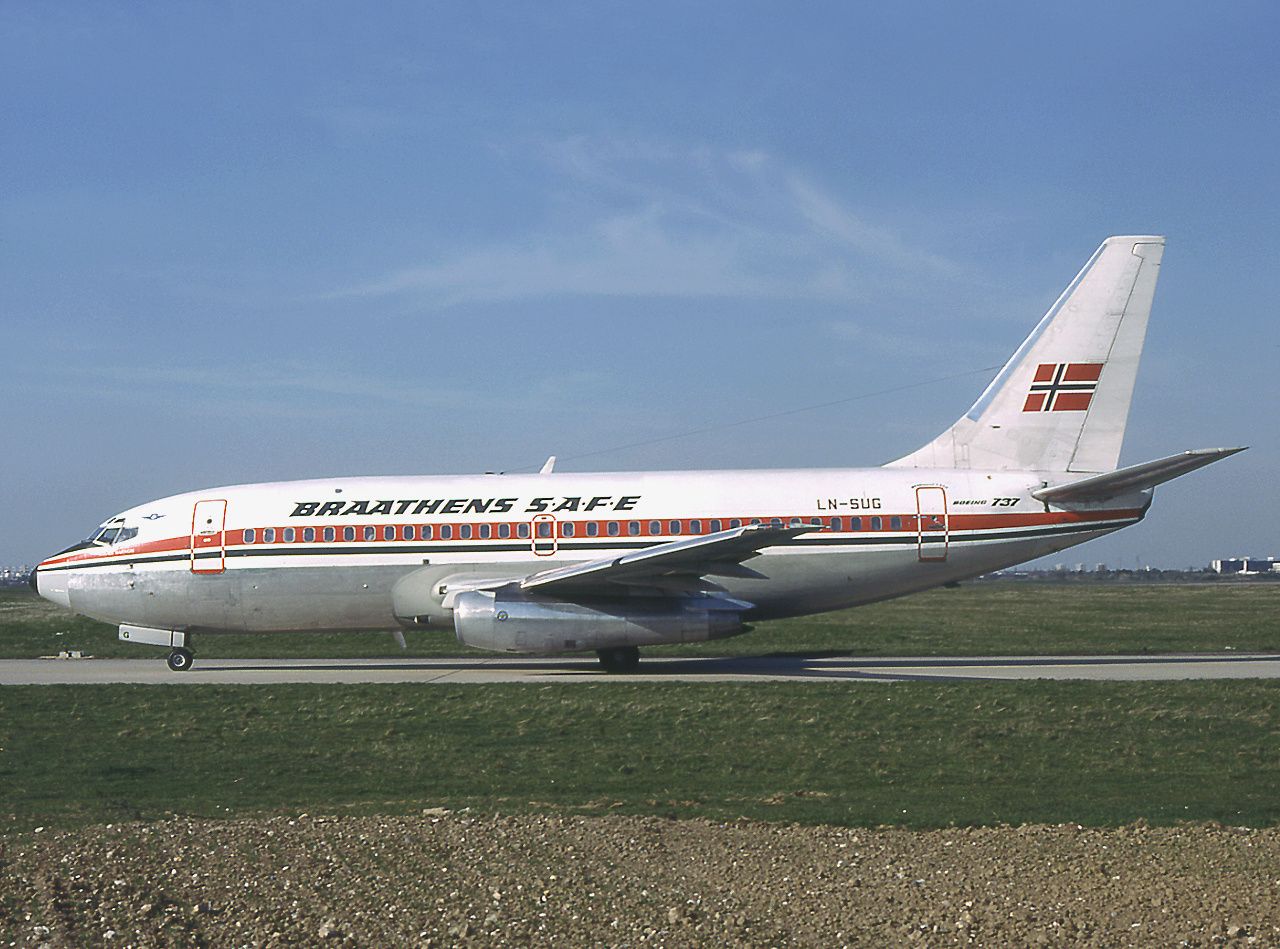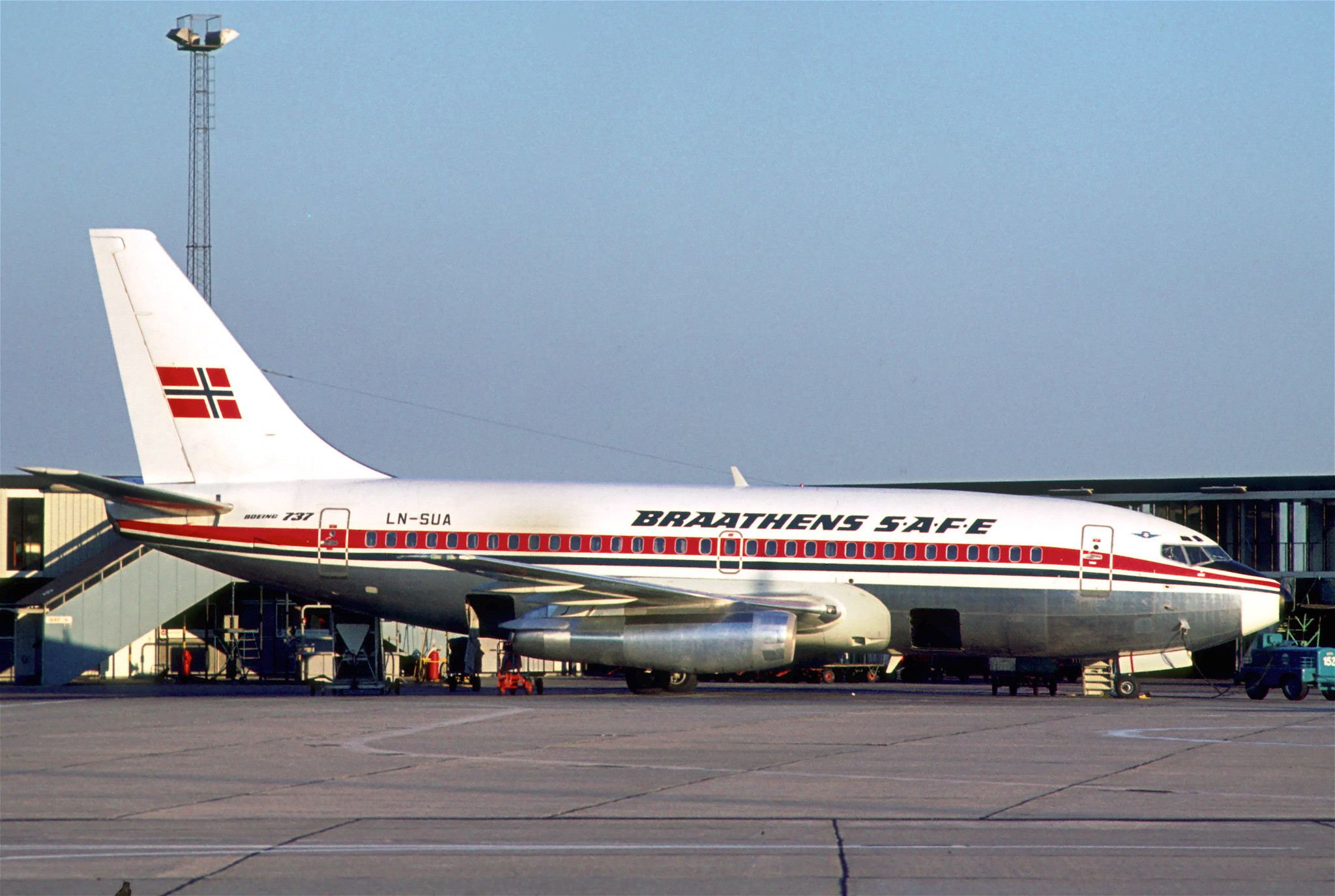This is the story of how a young man armed with an air pistol hijacked Braathens SAFE Flight 139 to become the first such incident ever in Norway. On June 21, 1985, a Boeing 737-200 with the registration LN-SUG took off from Trondheim Airport (TRD) for a regularly scheduled flight to Oslo Airport, Fornebu (FBU).
The day before the flight, the passenger who hijacked the aircraft, Stein Arvid Huseby, had just graduated from high school, where he studied health and social work. The very same day, he went out and purchased an air pistol that he would later carry on to the plane in his hand luggage.
There was no security at the airport
Because it was a short 55-minute domestic flight, there were no security checks at Trondheim Airport (TRD), allowing Huseby to take the air pistol onto the plane. Selecting a seat in the back of the aircraft, Huseby showed the gun to a female flight attendant telling her that he had placed explosives in the toilets. He said to her that he wanted to take over the plane but that it would continue on to the Norwegian capital as was scheduled.
When the plane landed at Oslo Airport, Fornebu (FBU), the aircraft was parked 2,300 feet from the terminal and was immediately surrounded by police. Two specially trained hostage negotiators were dispatched to the airport's control tower, where they negotiated with the hijacker. All air traffic was diverted to Oslo Airport, Gardermoen (OSL), during the standoff.
Huseby seemed calm
Dressed in a suit and wearing sunglasses, Huseby informed other passengers on the plane that no one would be hurt, providing that they cooperated with his demands. During the entire incident, Huseby asked for and drank beer with the passengers, who later described him as highly calm.
What the young hijacker wanted was to be able to speak with Conservative Prime Minister Kåre Willoch and Minister of Justice Mona Røkke. He also wanted to hold a press conference to describe how he had been treated since being released from prison. He wanted the politicians to guarantee that former inmates receive better treatment and economic security when released back into the general population.
All the passengers were released
With the assistance of a psychologist, the police negotiated the release of 70 passengers in exchange for the aircraft being moved closer to the terminal building. Thirty minutes later, the remaining passengers were released, leaving just Huseby and five crew members aboard the plane.
At 18:30, when Huseby had consumed all the beer on the plane, he agreed to throw the gun out of the window in exchange for more beer. The beer was delivered by a police officer, but the plane was immediately stormed by special forces who arrested Huseby without anyone else getting injured.
The trial
During the trial, it was revealed that Huseby, who was 24 years old at the time of the incident, had just finished studying at a Christian upper secondary school in Trondheim. He had previously been sentenced to jail for various offenses, including the violent robbery of a taxi driver and threatening someone with a shotgun.
Beaten and abused by his father, Huseby had lost his job as a seaman due to being drunk and, at the age of 19, spent time in a psychiatric institution. Two years before the hijacking, he was admitted to the Christian school and managed to stay sober for two years, but had started drinking again leading up to the hijacking.
During his trial, Huseby said the hijacking was nothing more than a cry for help and that he regretted what he had done. He said the incident was his means of sending the Prime Minister and Minister of Justice a message. During the trial, psychologists spoke about his troubled childhood and described how Huseby had become an alcoholic by age 17. They described him as having low self-esteem and an inability to make rational decisions. In the end, Huseby was sentenced to three years in prison, followed by five years of supervision.



.jpg)